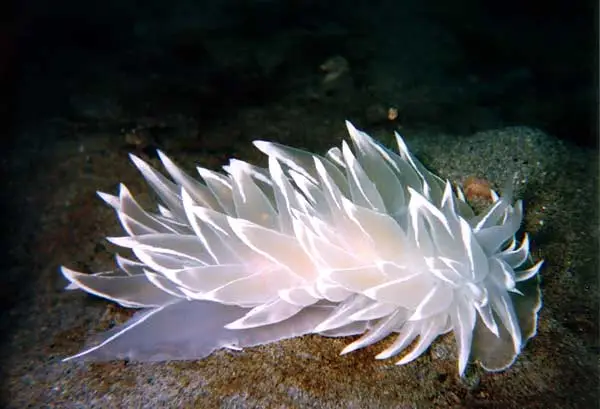It’s time for another fish profile! This time, I’m going to be tackling the Nudibranch (which isn’t as dirty as it sounds). What’s a nudibranch? Well, I’m glad you asked! Obviously, it’s a… Uhm, it’s… It sure is something, all right.
As a matter of fact, I’m not the only one who has trouble figuring out what, exactly, nudibranchs are. These slimy guys are often called “sea slugs” in the aquarium community, even though they aren’t related to official sea slugs. They just get stuck with that nickname because of the obvious physical similarity. Even scientists are getting it wrong! They’ve spent the past several decades arguing over how to classify these weird little critters, and they recently settled (for now, at least) on sticking them in a subclade within the Nudipleura clade.
Appearance
Nudibranchs vary wildly in shape and color, but they have a few similarities. Unlike many gastropods, they’re bilaterally symmetrical (their left side is identical to their right side) and they don’t carry around a big, bulky shell on their backs. This gives them a truly otherworldly appearance, almost like they’re simultaneously beautiful and grotesque. I can’t stop looking at these things, but at the same time I’d probably have a heart attack if I saw one of these things crawling up my bedroom wall in the middle of the night. They serve as a reminder as to just how beautiful and captivating the natural world can be.
If you asked an ancient Greek person what their names meant, they’d tell you it means “naked gills.” It’s an appropriate name, considering that they breathe out of protruding gills on their bodies. Don’t mistake the protruded gills for head tentacles, however. Those appendages are sensitive to smell, taste, and touch, kind of like all major senses rolled up into one slimy little tongue.
The Species
Believe it or not, those neon colors are actually a defense mechanism. Some use the colors to blend in with equally radiant coral and plant life, while others warn potential predators that biting into a nudibranch will earn them a mouthful of poisonous or disgusting gunk. So, nudibranchs are unpleasant to eat? Who would have guessed?
Caring for your Nudibranch
I’ll say this now: do not — I mean absolutely do not — go out and buy a nudibranch without doing the proper research. Some species of nudibranch can be kept in an aquarium, but others are far too dangerous. Remember those defense mechanisms I mentioned earlier? Some species of nudibranch will release toxins into the surrounding water to scare off predators. That’s not a big deal in the wide ocean, but in the confines of your aquarium, your nudibranch could slowly poison the rest of your tank.
As if they weren’t bad enough, nudibranch also have a weak constitution. They’re particularly susceptible to irregular chemical levels, meaning that your slimy beauty could be going belly-up after just a few days in your aquarium.
Diet
Diet is the number-one reason why aquarists need to be careful before dropping money on a nudibranch. These creatures are such picky eaters that they’d rather starve than switch to conventional aquarium food. Some feed exclusively on specific species of sponges, which means that you will need to make regular trips to your local fish store.
Is all of this worth it? Well, maybe. As with any hobby, it all depends on how much joy you get out of it. Just be warned: nudibranch may have eerily captivating beauty, but you may quickly find that these are just sharks in slug clothing as they poison the rest of your ecosystem and slowly take bites out of your wallet. For experienced and dedicated aquarists only!






Beautiful pictures. Taking care of a saltwater aquarium is more difficult than a freshwater aquarium. I have a 75-gallon freshwater tank and have bee successful w/o losing a fish.
I now want a saltwater tank.